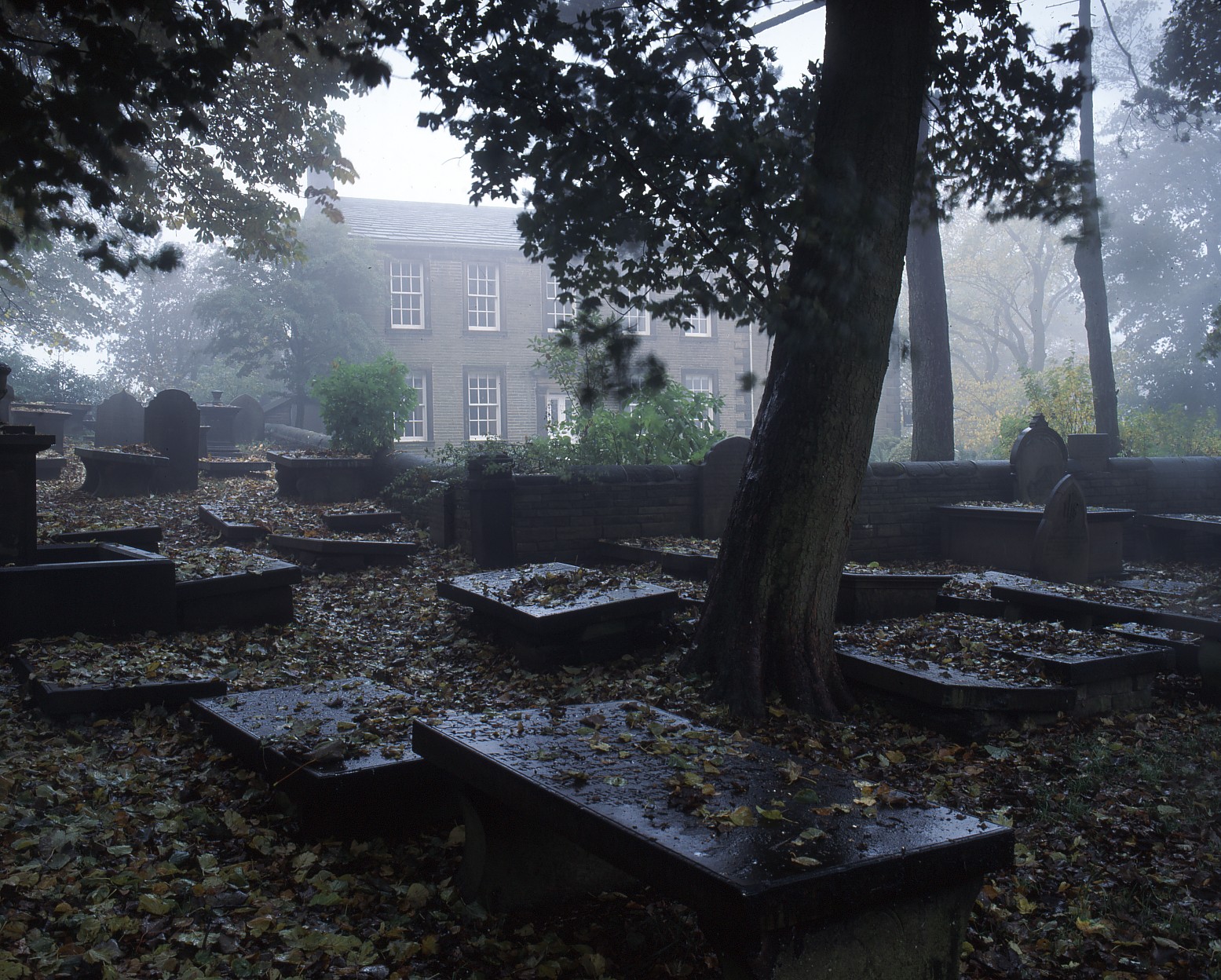Today’s literary scavenger-hunt takes me to Haworth, home of the Brontës, situated in West Yorkshire. Along with Walter Scott’s Abbotsford, the subject of my last post, Haworth is arguably one of the most important and exemplary writers’ houses of the period. Aside from this similarity however, Abbotsford and Haworth are worlds apart.
 Copywright: The Brontë Society
Copywright: The Brontë Society
I’ve visited Haworth at least three times, now, but winter or summer, the experience is remarkably consistent. I made my first visit on a rain-blackened day in July, my second on the shortest day of the year in the snow, my third on a day in May when I finally made it up to Wuthering Heights in a thick wet mist laced with cuckoos. But on all these occasions I found that Haworth epitomised and dramatised the fictional genre associated with its tenants: Gothic fiction in the tradition of Ann Radcliffe. An overwhelming sense of dysphoria, and almost of masochism, overwhelms you upon entering, as you find yourself enmeshed in an actualised Gothic novel, imaginatively imprisoned with the unhappy ghosts of the sisters.–Despite the cheerful souvenir shops selling everything from Brontë Original Unique Yorkshire Liqueur to Brontë fudge, and the choice of refreshments at the comfortable (if incongruously named) Heathcliff cafe or the Villette tea-shop, the site looked thoroughly dreary. The Parsonage appears satisfyingly like a setting for a Gothic novel, pressed behind by the wild moors, and fronted by a churchyard heaving uncomfortably with blackened streaked gravestones – some flat, some upright, some broken and tilting as though the dead were forcing themselves up uneasily through the sodden strips of grass – pressing hard against the wall that divides the churchyard from the tiny front garden. This company of the dead eventually claimed the famous tenants of the Parsonage: ‘This was the site/ Of the gate leading/ To the church, used by/ The Brontë Family,/ And through which they/ Were carried to/ Their final resting place’, remarks a tablet on the graveyard wall opposite the front door. If the Parsonage is defined as Gothic by the wildness of the moors and the grimness of the graveyard, it is also recognisably Gothic in being set in such a confined and palimpsest-like space. The proximity to the parsonage of the church in which six of the family are buried, the church-yard in which their servants are placed, the school at which Charlotte taught, the Black Bull at which Branwell Brontë used to get his drink, and the apothecary’s shop at which he purchased his opium, make Haworth an unusually compact literary site.
The Parsonage itself presents as a confined and super-feminine domestic space. The visitor is invited by the occasional caption to imagine Emily peeling potatoes in the kitchen, or practising the piano in the front room; the girls playing with toys in the children’s ‘office’ and later walking round and round the parlour table; and Charlotte dressing for her wedding and picking up her bonnet to go to church. The Parsonage derives its power over the visitor from the way in which it is emotionally and historically compressed as a domestic narrative: the nursery in which the children played is the room in which the adult Emily slept and may have died, and where she was supposed to have rescued Branwell from his burning bed, in which he later died; next to it is that in which Patrick Brontë struggled with his alcoholic son Branwell in the throes of delirium tremens; the dining-room in which Charlotte, Emily and Anne walked round the table, discussing their plans, is also the room that contains the hard, slippery-looking sofa on which Emily is traditionally supposed to have died, and where the grieving Charlotte paced alone late at night after the deaths of her sisters; and the gate through which Charlotte passed to her wedding is the gate through which her coffin was carried on the day of her funeral. As this description suggests, the site is classically Gothic in its juxtaposition of the innocence and happiness of childhood and youth, with adult vice, shame, crime and violent death. It reads like a set of deleted scenes from Jane Eyre, so similar is its affect to the episode in which Jane goes to bed the night before her wedding to Rochester, only to be woken by the ‘ghost’ of the insane Bertha Mason, the disavowed first wife of her husband-to-be.
Where Abbotsford is positively boastful about the professionalism of writing, Haworth Parsonage makes the labour of writing all but invisible. Although many of the displays point towards writing for those who know their Brontë biography (the solitary toy soldier in the nursery speaks to the aficionado of the childhood fictional worlds of Gondal and Angria, a diary-paper and a book lies on the kitchen table, and the table in the parlour is the ‘scene of writing’ where the young women wrote and discussed their novels), the house itself does not successfully dramatise professional published writing except as something done in miniature, and very privately. In stark contrast to Abbotsford, Haworth Parsonage, with its suffocating domesticity, does not serve as a celebration of literary achievements. Rather, it invites astonishment that full-scale novels could possibly be thought-up and produced in such a narrow space.
